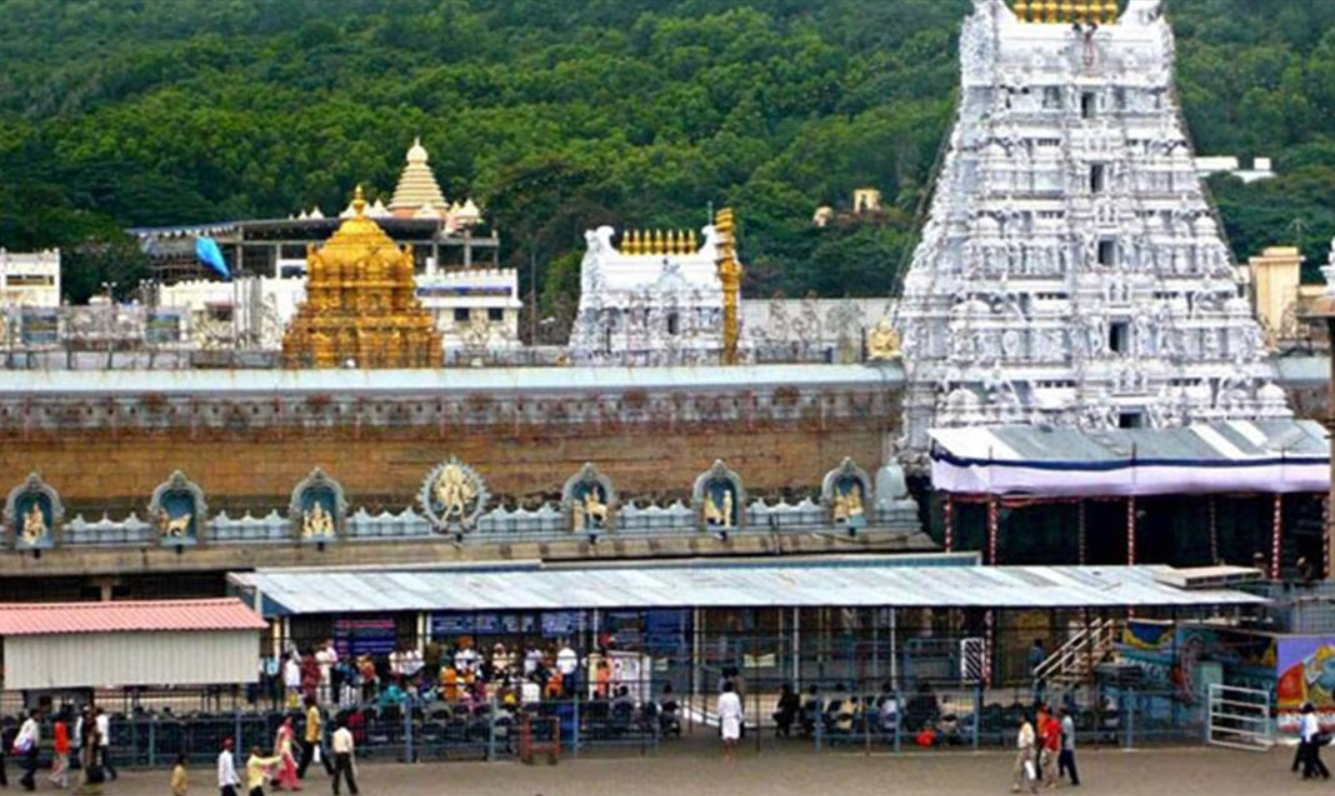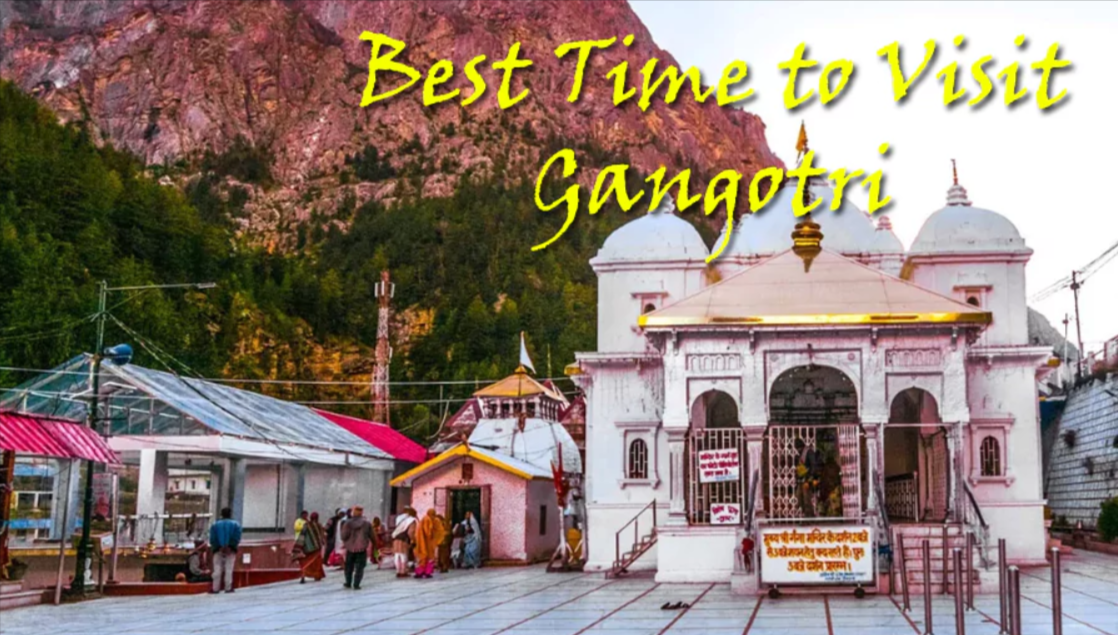Travel
The Hills on the Gold Coast: 5 Reasons to Go

Oh Australia; one of the world’s most beautiful and iconic countries. From the people to the wildlife and landscapes, there are several reasons why you should consider a road trip in a campervan hire in Australia.
An area that you don’t want to miss out on seeing while in Australia are the Hills on the Gold Coast. The collection of cities and towns on the Gold Coast are full of fun things to do and spectacular nature to admire. It’s the perfect destination to take your campervan hire and enjoy the nature, people, and fun things to do.
If you’re planning your trip and want to see which destination would be the best one for your trip, consider the following reasons why the Hills on the Gold Coast may be a top vacation destination for you:
- You can hike in Springbrook National Park. If you enjoy hiking, you’ve come to the right place. The Gold Coast is a spectacular area with plenty of breathtaking nature to explore. While they aren’t the most challenging trails, the walks at Springbrook National Park are certainly rewarding. For example, the Twin Falls Circuit isn’t very long at only 4-kilometres, but it’s definitely a walk that will provide you with gorgeous views of the ocean, as well as lead you through the rainforest to admire waterfalls. If you’re all about waterfalls, you’ll want to visit the Purling Brook Falls as you walk the Purling Brook Falls Circuit.
- Check out the view from Kirra Hill. From the views of the ocean below to the opportunities for whale watching in whale season, a climb up Kirra Hill will reward you with the best photography opportunities. You can enjoy a meal while there and time your climb perfectly to enjoy a sunrise or sunset overlooking the water. Before or after capturing your Insta-worthy photos, you can cool off at the beach below.
- Cool off in the Currumbin Rock Pools. If you’re visiting in the spring or summer, you’ll probably want to take advantage of local watering holes. A great spot in the hills is the Currumbin Rock Pools. Here, you’ll find a lot of people with the same idea as you: to have a blast while enjoying the cool water. Don’t worry there is plenty of room for everyone. Whether you’re visiting with the kids and want to wade in the shallow areas or you prefer adventure and want to jump off the rocks, you can do whatever suits your fancy (as long as you exercise caution) while visiting the Currumbin Rock Pools.
- Climb the Q1 Resort Tower. You’ve probably heard of the climbing tours on the Sydney bridge, right? What would you say to something just a tad bit more daring? If the answer is a confident yes, then you’ll want to check out the climb at the Q1 Resort Tower. This 90-minute adventure is going to be something that you’ll never forget. You’ll be rewarded with an incredible view of the ocean and city below. You can climb in the day or climb in the night. Either way, the view will be breathtaking. If you want to mix a photo opportunity with a bit of adventure, the Q1 Resort Tower climb is definitely a great option for you.
- Enjoy the beautiful beaches in the area. Visiting the Gold Coast and not taking time to explore the beaches is like going to Chicago and not trying deep dish pizza—or something like that. The Gold Coast is well-known for it’s abundance of surf worthy and gorgeous beaches, so it behooves you to take the time to see them. From Rainbow Bay to Nobby Beach and Currumbin Creek, there are plenty for you to choose from. Many beaches are lined with cafes and restaurants so that you can enjoy a bite to eat while enjoying the ocean breeze. If you’d rather have a picnic, you’ll find plenty of barbeque grills for you to prepare your own food. It’s the perfect option for a day out with your family or friends.
You can’t visit Australia without taking the time to visit the Gold Coast. While there are many gorgeous areas to visit in this country, the Gold Coast is undoubtedly one of the best. From its abundance of nature and parks to the sunny beaches where you can relax, the Gold Coast is where it’s at—especially in the warmer months of the year.
If you are looking for a place where you can enjoy great night life, nature, friendly people, and plenty of heart pumping activities, this is the place for you. Go ahead and pack up at that campervan hire and discover the beauty of Australia. There is no place quite like it.
Travel
How to Identify Airbus and Boeing Aircraft? Complete Guide

If you glance towards the sky, or take on a plane, you’ll typically see large aircrafts that carry thousands of people. They are mostly owned by the two biggest manufacturers of aircraft worldwide -the Airbus (Europe) and Boeing (USA). Both companies manufacture commercial jets that appear like one another initially. However, with a keen eye, you’ll be able to discern whether an aircraft is Airbus as well as one from Boeing.
What is the difference?
- Travel Enthusiasts: Aviation lovers enjoy spotting different aircraft types.
- Safety and Comfort Certain travelers have preference to Airbus and Boeing models.
- Basic Awareness Being aware of the basic can make air travel more enjoyable.
The key differences between Airbus as well Boeing
Nose Shape
- Airbus Most often, it has a large, bulbous nose that is rounded (looks like an animal face).
- Boeing: Features an more pointed, sharper nostril with a more modern design.
Example Consider: Compare one of the Airbus A320 (round nose) with the Boeing 737 (pointed nose).
Cockpit Windows
- Airbus Windows feature a more straight/square style and include a Vertical window frames.
- Boeing: Windows are more bent and tilted which gives a more sharp appearance.
Aviation spotters frequently say: If the cockpit window appears like “eyebrows,” it’s a Boeing.
Front Landing Gear Door
- Airbus Door to the nose of the aircraft usually displays the model number of the aircraft (like A320, A330).
- Boeing: Generally does not show its model at the door to the landing gear.
Wingtips
- Airbus It uses sharklets or curving vertical fins at the wingstips.
- Boeing: Traditionally used to have blended wingslets (curved upwards). The latest models, like 737 MAX have split winglets designed to look like an “V”.
Engines
- Airbus Airbus engines appear slightly smaller on the bottom due to the clearance from the ground.
- Boeing The engines are generally perfect round but on 737s, they can appear flat in the lower part due to less ground clearance.
Fuselage (Body) Shape
- Airbus The more round and consistent across.
- Boeing: Some models sport an a little more tapered rear fuselage close to the rear.
Tail Design (Vertical Stabilizer)
- Airbus The tails are often more round and are larger.
- Boeing: Tails are typically smaller and taller.
Popular Models to Look Out for
- Airbus A320 Family: Medium- and short-haul aircrafts with a round nose, frequent in airlines such as IndiGo, Air India, and Vistara.
- Boeing 737 Family: Rival to A320 as seen in SpiceJet along with Akasa Air.
- Airbus A350 vs. Boeing 787 Dreamliner: Both are modern, long-haul jets. The A350 is distinguished by an distinctive “masked” view of the cockpit style The 787 sports an more rounded, smoother nose.
Simple Tips for Travelers
- Check out your window of the cockpit first. Square = Airbus Angle = Boeing.
- Take note of The nose It’s round. Airbus and pointed = Boeing.
- Examine the tips of the wing -Curved sharklets are Airbus split or bent winglets = Boeing.
- Take a look at the information about the gate to board The airports generally have the model of the plane (e.g. B737, A320 B787, A320).
The Common Confusions
- Airbus A320 vs. Boeing 737: The most complicated pair. The cockpit window’s shape and the angle of the nose are among the easiest to identify.
- Airbus A350 vs. Boeing 787: Both have advanced designs. Keep in mind that A350 features the black cockpit “mask,” while the 787 has more rounded curves.
The Final Words
The distinction between Airbus or Boeing aircraft isn’t so difficult as you think. If you pay close attention to the shape of the nose and the windows in the cockpit, as well as engines and the wingtips it is easy to discern the difference between them. As time passes frequent flyers develop an sense of spotting subtle differences in a matter of seconds. If you ever take a flight or see one in the sky take these tips and make your friends jealous of your knowledge of aviation!
Travel
Tirupati Balaji Mandir: Darshan time, Normal Fee, VIP Fee and Top Factors That Affect Darshan Time

Tirumala Tirupati Balaji Temple located in Andhra Pradesh is one of the most frequented pilgrimage destinations around the globe. Every every day, thousands of worshippers are attracted to the shrine to pray for the blessings from Lord Venkateswara. One of the most common questions many people ask is” “How many hours is required for Tirupati darshan?” The answer is contingent on the kind of darshan, the crowd size and the time when you visit.
Standard Time of Tirupati Darshan
Darshan’s duration can vary between 2 up to 20+ hours according to the category of darshan you select:
| Typ of Darshan | ticket Cost | Average Darshan Time |
| Sarva Darshan (Free Darshan) | Free | Between 8 and 20 hours (or longer in the case of celebrations) |
| Special Entry Rs300 Darshan (Seegra Darshan) | Rs300 per person | Between 2 and 4 hours |
| Divya Darshan (Footpath Walk Alipiri, and Srivari Mettu)** | Free | Between 6 and 10 hours |
| VIP Break Darshan (Recommendation Letter / Protocol) | Variable | Between 1 and 2 hours |
An In-depth Explanation of Each Darshan Type
1. Sarva Darshan (Free Darshan)
- This is the simplest darshan that is free of charge.
- On a normal day on a normal day, it can take 8 to 12 hours.
- On holidays, weekends and even festivals such as Brahmotsavam the wait duration can be as long as twenty to thirty hours.
- Devotees are required to sit in long lines and wait in separate areas.
2. Special Entry of Rs300 Darshan
- It is the most sought-after and efficient option.
- Ticket costs $300 per ticket and tickets must be booked online on TTD’s official website. TTD site.
- The average darshan time is 2 – 4 hours dependent on the crowd.
- The best for families, older individuals, or those who need faster darshan.
3. Divya Darshan (For Walking Pilgrims)
- The devotees who walk from Alipiri (11 km) or Srivari Mettu (2.1 km) are given special entry tokens.
- It typically takes about 6 to 10 hours which includes trekking and wait time.
- Darshan is offered for free and is loved by many devotees due to its significance in the spiritual realm.
4. VIP Break Darshan
- The VIP room is available to ministers, officials from the government and individuals with recommendation letters from authorities higher up.
- Darshan time is incredibly fast, typically between 30 and two hours.
- Devotees must follow a proper dress code (dhoti/saree/traditional wear).
Factors that Affect Darshan Time
| Factor | Effect On Darshan Time |
| Day of Visit | Festivals and weekends are usually more than crowded |
| Season | The holidays of summer and New Year’s Eve Vaikunta Ekadashi are peak seasons. |
| Time Slot | Early morning darshan takes less time |
| Festivals & Events | Brahmotsavam and Rathotsavam both increase the waiting time |
| Seniors / Disabled Services | TTD offers darshan facilities for seniors and differently-abled individuals. |
Tips to Cut Down the Time You Wait
- Get Rs300 Special Entry Darshan tickets ahead of time
- Avoid public holidays, weekends and during festival hours.
- Select early morning times (3 am – 7:15 AM)
- Utilize Sheegra Darshan Senior Citizen Darshan or Divya Darshan If applicable
- Keep up-to-date via on the TTD official website or the Mobile App
Conclusion
The duration for Tirupati darshan ranges between 2 hours and 20 hours, depending on the kind of darshan you want to experience and the number of people. If you are looking for a faster experience, the Special Entrance Darshan is the most suitable option. Darshans that are free can take a long periods of time, but it is highly regarded by many devotees because of its spiritual significance.
Travel
Best Time to Visit Gangotri (Uttarakhand)

Gangotri is one of four Char Dham pilgrimage centers in Uttarakhand (India). It’s a peaceful and spiritually significant place for nature lovers and devotees alike. Gangotri, located at 3,100 meters above sea level in the Garhwal Himalayas offers stunning views of snow-capped mountain ranges, lush valleys and cascading falls. It’s important to pick the right time of year for your trip, because Gangotri has a variety of weather conditions.
Gangotri Summer (April to June)
Summer, between April and June, is the ideal time to visit Gangotri. The weather during this time is ideal, with temperatures between 10degC and 20degC. This makes it perfect for trekking and sightseeing. Around late April or early may, the temple doors will open to mark the beginning of pilgrimage season. The clear skies, lush greenery and blooming flowers provide the perfect backdrop for spiritual exploration and activities. The summer is the best time for trekkers to tackle the difficult journey up to Gaumukh glacier, which is the source of Ganges.
Gangotri during the Monsoon season (July-September)
Gangotri receives heavy rain during the monsoon, which lasts from July to September. Travel is difficult and dangerous in the region due to the risk of landslides. Trekking can be dangerous due to the increased water level in the river. The rain can transform the landscape to a lush green oasis, and the falls become more powerful, adding beauty to the area. It is important to check the weather and road conditions before you travel during monsoon season.
Gangotri Autumn (September – November)
The autumn, between late September and early November, is also a great time to visit Gangotri. Rains have stopped, allowing the landscape to be refreshed and rejuvenated. Temperatures range between 5degC and 15degC during this time, which makes the weather comfortable. The temple is open and there are fewer people than during the summer peak season. This allows for a more serene and peaceful environment to worship and explore. Autumn is a great alternative to summer because of the crisp mountain air and clear skies.
Gangotri Winter (November to February)
Due to the heavy snowfalls and temperatures that can fall below -5degC, Gangotri cannot be accessed during winter, between November and March. During this time, the temple is closed and the idol is taken to Mukhba (a village near Harsil) for worship. The roads leading to Gangotri can be blocked by heavy snowfall and harsh weather conditions. Harsil, a nearby destination, offers a peaceful atmosphere and snow-covered landscapes for those who want to experience the Himalayan winter beauty.
The conclusion of the article is:
Gangotri’s best months to visit are the months between April and June in the summer, or September to November in the fall. The best time to visit Gangotri is during the summer months of April to June and in the autumn months of September to November. These seasons are characterized by pleasant weather conditions, clear skies and safe travel conditions. Choose the best time to visit Gangotri, whether you’re visiting for a spiritual pilgrimage, hiking, or just to enjoy the tranquil environment.
-

 Entertainment7 years ago
Entertainment7 years agoDownload Hindi Mp3 Songs
-

 Business8 years ago
Business8 years agoHow payday loans are becoming the preferred mode of choice
-

 SEO & Digital Marketing7 years ago
SEO & Digital Marketing7 years agoGenerate More Views on Your Instagram Profile with Cool Graphic Designs
-

 Auto6 years ago
Auto6 years agoWhat are Some Budget Friendly Bikes in India?
-

 Entertainment7 years ago
Entertainment7 years agoTips and tricks for safe winching
-

 Entertainment7 years ago
Entertainment7 years agoHow might Super Hero Thor going to help other Avengers in the Avenger4?
-

 Entertainment7 years ago
Entertainment7 years agoAmusement and Water Parks to Visit in Delaware
-

 Entertainment7 years ago
Entertainment7 years agoTop Websites To Download Bollywood Songs And Music Free Online













